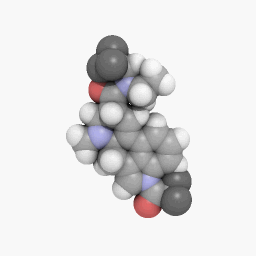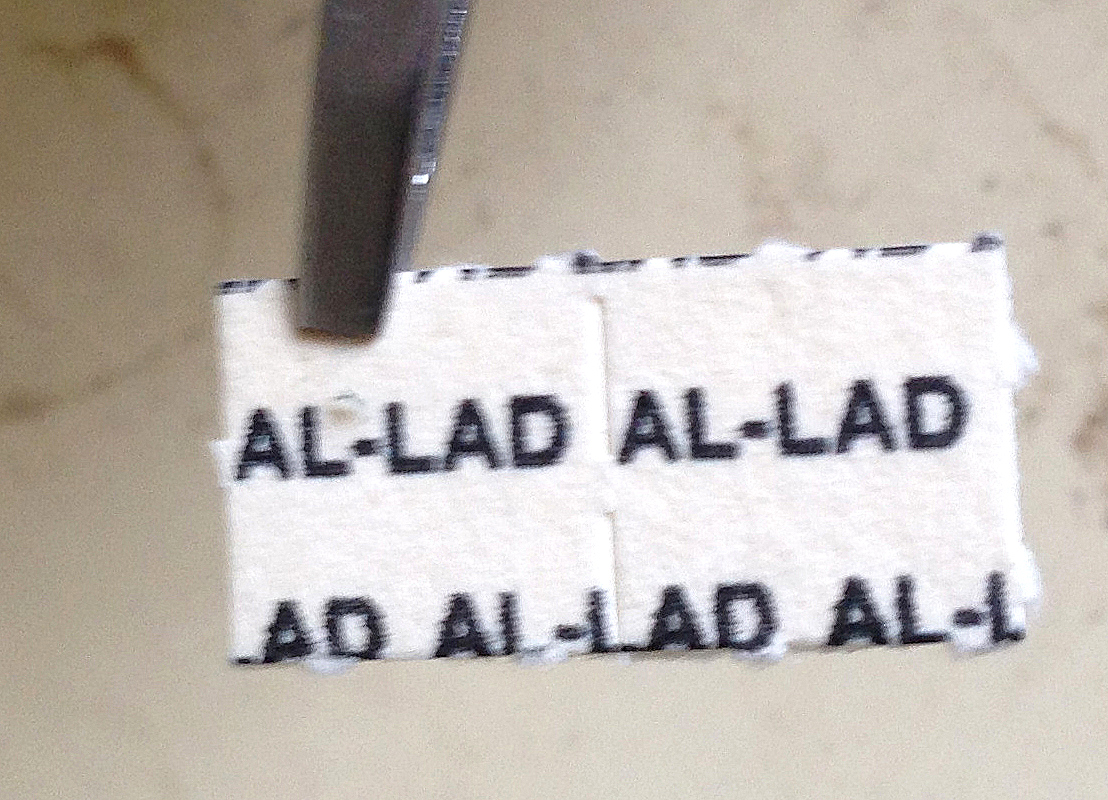|
ALD-52
ALD-52, also known as 1-acetyl-LSD, is a chemical analogue of lysergic acid diethylamide (LSD). It was originally discovered by Albert Hofmann in 1957 but was not widely studied until the rise in popularity of psychedelics in the 1960s. Effects In Entry 26 of his compendium ''TiHKAL'', which discussed LSD, chemist Alexander Shulgin touched briefly on the subject of ALD-52. His comments there are vague, second-hand accounts saying doses in the 50–175 µg range have resulted in various conclusions. One account found that there was less visual distortion than with LSD and it seemed to produce less anxiety and tenseness and that it was somewhat less potent. Another informant claimed it was more effective in increasing blood pressure. Yet another informant could not tell them apart. Safety In ''The Hallucinogens'' by Hoffer and Osmond (1967), ALD-52 is listed as having a lower (approximately 1/5) ''intravenous'' toxicity (in rabbits), a lower (approximately 1/8) pyretogen ... [...More Info...] [...Related Items...] OR: [Wikipedia] [Google] [Baidu] |
1P-LSD
1P-LSD or 1-propionyl-lysergic acid diethylamide is a psychedelic drug of the lysergamide class that is a derivative and functional analogue of LSD and a homologue of ALD-52. It has been sold online as a designer drug since 2015. It modifies the LSD molecule by adding a propionyl group to the nitrogen molecule of LSD's indole. Pharmacology Since LSD is detected when 1P-LSD is incubated in human serum, 1P-LSD acts, at least in part, as a prodrug for LSD. Effects The effects profile of 1P-LSD is not well defined in the scientific literature. It is generally thought to be comparable to that of LSD. A study in 2020 found that intravenous administration of 1P-LSD has a somewhat shorter duration than LSD in humans. 1P-LSD is present for a very short time (4 hours) prior to being completed metabolized to LSD. The 2020 study found that it is not possible to reliably distinguish between the oral uptake of LSD and 1P-LSD until unique metabolites are detected by sensitive analytic ... [...More Info...] [...Related Items...] OR: [Wikipedia] [Google] [Baidu] |
ETH-LAD
ETH-LAD, 6-ethyl-6-''nor''-lysergic acid diethylamide is an analogue of LSD. Its human psychopharmacology was first described by Alexander Shulgin in the book TiHKAL. ETH-LAD is a psychedelic drug similar to LSD, and is slightly more potent than LSD itself, with an active dose reported at between 20 and 150 micrograms. ETH-LAD has subtly different effects to LSD, described as less demanding. Legality On June 10, 2014 the UK Advisory Council on the Misuse of Drugs (ACMD) recommended that ETH-LAD be specifically named in the UK Misuse of Drugs Act as a class A drug despite not identifying it as ever having been sold or any harm associated with its use. The UK Home office accepted this advice and announced a ban of the substance to be enacted on 6 January 2015. ETH-LAD is illegal in Switzerland as of December 2015. See also * Lysergic acid diethylamide (LSD) * 1cP-LSD * 1B-LSD * 1P-LSD * 1V-LSD * ALD-52 * 1cP-AL-LAD * AL-LAD * 1P-ETH-LAD * PRO-LAD * LSM-775 * LSZ * O-Ac ... [...More Info...] [...Related Items...] OR: [Wikipedia] [Google] [Baidu] |
Tim Scully
Robert "Tim" Scully (born August 27, 1944) is an American computer engineer, best known in the psychedelic underground for his work in the production of LSD from 1966 to 1969, for which he was indicted in 1973 and convicted in 1974. His best known product, dubbed "Orange Sunshine", was considered the standard for quality LSD in 1969. He was featured in the documentary '' The Sunshine Makers''. Early life Scully grew up in Pleasant Hill, which is across the Bay from San Francisco. In eighth grade, he won honorable mention in the 1958 Bay Area Science Fair for designing and building a small computer. During high school, he spent summers working at the Lawrence Berkeley Laboratory on physics problems. In his junior year of high school, Scully completed a small linear accelerator in the school science lab (he was trying to make gold atoms from mercury), which was pictured in a 1961 edition of the ''Oakland Tribune''. Scully skipped his senior year of high school and went directly to ... [...More Info...] [...Related Items...] OR: [Wikipedia] [Google] [Baidu] |
Nicholas Sand
Nicholas Sand (born Nicholas Francis Hiskey; May 10, 1941 – April 24, 2017) was a cult figure known in the psychedelic community for his work as a clandestine chemist from 1966 to 1996 for the Brotherhood of Eternal Love.Nocenti, Annie. Baldwin, Ruth. Krassner, Paul. ''The High Times Reader''. Nation Books. 2004 Sand was part of the League for Spiritual Discovery at the Millbrook estate in New York, has been credited as the "first underground chemist on record to have synthesized DMT" and is known for manufacturing large amounts of LSD.Lee, Martin A. Shlain, Bruce. '' Acid Dreams: The Complete Social History of Lsd''. Grove Press. 2007 Early life Sand was born in Brooklyn, New York City, on May10, 1941. His father, Clarence Hiskey, was a researcher in the Manhattan Project's Metallurgical Laboratory who attempted to spy for the Soviet Union. After his parents divorced, Sand took his mother's maiden name. Sand graduated from Erasmus Hall High School in 1959 and then spent ... [...More Info...] [...Related Items...] OR: [Wikipedia] [Google] [Baidu] |
1B-LSD
1B-LSD (N1-butyryl-lysergic acid diethylamide) is an acylated derivative of lysergic acid diethylamide (LSD), which has been sold as a designer drug. In tests on mice it was found to be an active psychedelic, though with only around 1/7 the potency of LSD itself. Legal status 1B-LSD is illegal in Singapore. Sweden's public health agency suggested classifying 1B-LSD as a hazardous substance, on June 24, 2019. See also * Lysergic acid diethylamide (LSD) * 1cP-LSD * 1P-LSD * 1V-LSD * ALD-52 * 1cP-AL-LAD * AL-LAD * ETH-LAD * 1P-ETH-LAD * PRO-LAD * LSM-775 * LSZ * O-Acetylpsilocin ''O''-Acetylpsilocin (also known as psilacetin, 4-acetoxy-DMT, 4-AcO-DMT, or synthetic shrooms) is a semi-synthetic psychoactive drug that has been suggested by David Nichols to be a potentially useful alternative to psilocybin for pharmacolog ... (4-AcO-DMT) References Designer drugs Lysergamides Prodrugs Serotonin receptor agonists {{hallucinogen-stub ... [...More Info...] [...Related Items...] OR: [Wikipedia] [Google] [Baidu] |
1cP-LSD
1cP-LSD (''N''1-(cyclopropylmethanoyl)-lysergic acid diethylamide) is an acylated derivative of lysergic acid diethylamide (LSD), which has been sold as a designer drug. In tests on mice it was found to be an active psychedelic with similar potency to 1P-LSD. Legal status Sweden's public health agency suggested classifying 1cP-LSD as a dangerous substance on 18 December 2019 and later classified it as such on 22 April 2021. See also * Lysergic acid diethylamide (LSD) * 1B-LSD * 1P-LSD * 1V-LSD * ALD-52 * 1cP-AL-LAD * AL-LAD * ETH-LAD * 1P-ETH-LAD * PRO-LAD * LSM-775 * LSZ * O-Acetylpsilocin ''O''-Acetylpsilocin (also known as psilacetin, 4-acetoxy-DMT, 4-AcO-DMT, or synthetic shrooms) is a semi-synthetic psychoactive drug that has been suggested by David Nichols to be a potentially useful alternative to psilocybin for pharmacolog ... (4-AcO-DMT) References Designer drugs Lysergamides Prodrugs Serotonin receptor agonists {{hallucinogen-stub ... [...More Info...] [...Related Items...] OR: [Wikipedia] [Google] [Baidu] |
AL-LAD
AL-LAD, also known as 6-allyl-6-''nor''-LSD, is a psychedelic drug and an analog of lysergic acid diethylamide (LSD). It is described by Alexander Shulgin in the book '' TiHKAL'' (''Tryptamines i Have Known And Loved''). It is synthesized starting from nor-LSD as a precursor, using allyl bromide as a reactant. Effects in humans While AL-LAD has subtly different effects than LSD, and appears to be slightly shorter lasting, their potencies are similar; an active dose of AL-LAD is reported to be between 50 and 150 micrograms. AL-LAD has a known but short and highly uncommon history of recreational human use, which originated in Ireland and the UK, but spread internationally. Chemistry AL-LAD does not cause a color change with the Marquis, Mecke or Mandelin reagents, but does cause the Ehrlich's reagent to turn purple because of the presence of the indole moiety in its structure. Legal status AL-LAD is not scheduled by the United Nations' Convention on Psychotropic Substanc ... [...More Info...] [...Related Items...] OR: [Wikipedia] [Google] [Baidu] |
Psychedelic Drug
Psychedelics are a subclass of hallucinogenic drugs whose primary effect is to trigger non-ordinary states of consciousness (known as psychedelic experiences or "trips").Pollan, Michael (2018). ''How to Change Your Mind: What the New Science of Psychedelics Teaches Us About Consciousness, Dying, Addiction, Depression, and Transcendence'' Sometimes, they are called classic hallucinogens, serotonergic hallucinogens, or serotonergic psychedelics, and the term ''psychedelics'' is used more broadly to include all hallucinogens; this article uses the narrower definition of ''psychedelics''. Psychedelics cause specific psychological, visual, and auditory changes, and often a substantially altered state of consciousness.Leary, Timothy; Metzner, Ralph (1964). ''The Psychedelic Experience: A Manual Based on The Tibetan Book of the Dead'' Psychedelic states are often compared to meditative, psychodynamic or transcendental types of alterations of mind. The "classical" psychedelics, the psy ... [...More Info...] [...Related Items...] OR: [Wikipedia] [Google] [Baidu] |
1V-LSD
1V-LSD or 1-valeryl-D-lysergic acid diethylamide is a psychotropic substance and a research chemical with psychedelic effects. 1V-LSD is an artificial derivative of natural lysergic acid, which occurs in ergot alkaloids, as well as being an analogue of LSD. 1V-LSD has been sold online since a recent amendment to the German NpSG was enforced which controls 1P-LSD and now 1cP-LSD and several other lysergamides. Pharmacology As demonstrated with other N-acylated derivatives of LSD, 1V-LSD is believed to serve as a prodrug for LSD but may also act as a weak partial agonist at the 5-HT2A receptor. Animal studies A Head-twitch response assay in mice found that 1V-LSD has a similar potency to 1P-LSD and 1cP-LSD, with behavioral effects also closely resembling these structural analogs. Chemistry 1V-LSD is the condensation product of valeric acid (pentanoic acid) and LSD, where the valeroyl group is substituted on the NH position of the indole moiety. Ehrlich's reagent is us ... [...More Info...] [...Related Items...] OR: [Wikipedia] [Google] [Baidu] |
Lysergic Acid Diethylamide
Lysergic acid diethylamide (LSD), also known colloquially as acid, is a potent psychedelic drug. Effects typically include intensified thoughts, emotions, and sensory perception. At sufficiently high dosages LSD manifests primarily mental, visual, as well as auditory, hallucinations. Dilated pupils, increased blood pressure, and increased body temperature are typical. Effects typically begin within half an hour and can last for up to 20 hours. LSD is also capable of causing mystical experiences and ego dissolution. It is used mainly as a recreational drug or for spiritual reasons. LSD is both the prototypical psychedelic and one of the "classical" psychedelics, being the psychedelics with the greatest scientific and cultural significance. LSD is typically either swallowed or held under the tongue. It is most often sold on blotter paper and less commonly as tablets, in a watery solution or in gelatin squares called panes. LSD is considered to be non-addictive with low potent ... [...More Info...] [...Related Items...] OR: [Wikipedia] [Google] [Baidu] |
Research Chemical
Research chemicals are chemical substances used by scientists for medical and scientific research purposes. One characteristic of a research chemical is that it is for laboratory research use only; a research chemical is not intended for human or veterinary use. This distinction is required on the labels of research chemicals, and is what exempts them from regulation under parts 100-740 in Title 21 of the Code of Federal Regulations ( 21CFR). Background Pharmacological research chemicals Research chemicals are fundamental in the development of novel pharmacotherapies. Common medical laboratory uses include ''in vivo'' and animal testing to determine therapeutic value, toxicology testing by contract research organizations to determine drug safety, and analysis by drug test and forensic toxicology labs for the purposes of evaluating human exposure. Many pharmacologically active chemicals are sold online under the guise of "research chemicals," when in reality they are untested d ... [...More Info...] [...Related Items...] OR: [Wikipedia] [Google] [Baidu] |





